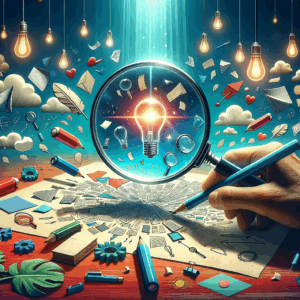
AI For Architectural Visualization: Stunning And Effortless Design
- Understanding AI in Architectural Visualization
- The Benefits of AI in Architectural Visualization
- How AI Tools Enhance Design Workflow
- Generative Design: A Game Changer for Architects
- Advantages of Generative Design
- Real-Time Rendering: Bringing Designs to Life
- Pandering to Personalization: AI and User Preferences
- Techniques for Personalization
- Overcoming Challenges with AI
- The Future of AI in Architectural Visualization
- Trends to Watch
- Case Studies: Success Stories in AI Architecture
- The Role of Collaboration in AI-Enhanced Design
- Key AI Tools for Architectural Visualization
- Addressing Ethical Considerations
- FAQs
- References
Understanding AI in Architectural Visualization
Artificial Intelligence (AI) has transformed various industries, and architecture is no exception. Architectural visualization, in particular, benefits significantly from AI advancements. This fusion allows architects to create stunning designs efficiently while enhancing collaboration and decision-making.
With the increasing complexity of architectural projects, AI offers a streamlined approach. It analyzes massive data sets, understands client preferences, and even predicts project outcomes. Such capabilities lead to a more insightful design process. Thus, designers can focus on creativity while engaging in a faster and more efficient workflow.
The Benefits of AI in Architectural Visualization
Using AI in architectural visualization offers a plethora of advantages. One key benefit is the ability to create designs quickly. Gone are the days when architects spent hours manually crafting 3D models. Instead, AI tools can generate detailed visualizations in mere minutes or even seconds.
Moreover, AI enhances accuracy. By analyzing previous projects, AI learns patterns and preferences, helping architects avoid mistakes. With predictive simulations, designers can assess how different materials and layouts will perform in real-life scenarios. This kind of intelligent feedback leads to informed decision-making.
How AI Tools Enhance Design Workflow
AI tools streamline the design workflow, making tasks more manageable. Consider software like generative design platforms, which allow designers to input parameters. The software then generates multiple design variations based on those inputs. This process saves time and promotes innovative solutions.
Additionally, these tools often integrate with existing software, such as AutoCAD and SketchUp. Integrating AI solutions keeps the workflow smooth. Architects can easily transition between different stages of design, from conceptual sketches to 3D renders, making collaboration seamless.
Generative Design: A Game Changer for Architects
Generative design stands out as a revolutionary application of AI. By specifying constraints, such as material, weight, and aesthetics, architects unleash AI’s full potential. The software produces numerous design options, each optimizing for the given parameters.
This process encourages creativity. Architects can explore shapes and forms they might not have considered otherwise. It also nurtures a more sustainable approach, as AI can suggest materials that minimize environmental impact.
Advantages of Generative Design
– Enhanced Creativity: Provides numerous design options.
– Sustainability: Identifies eco-friendly materials and methods.
– Time Efficiency: Reduces the time needed for manual iterations.
Real-Time Rendering: Bringing Designs to Life
Real-time rendering uses AI to create instant visual feedback. Instead of waiting hours or days for high-quality renders, architects can view changes almost immediately. This capability allows architects to experiment with lighting, materials, and environments in real-time.
Moreover, this technology helps clients understand design choices better. When clients visualize a space as it will look in real life, they can provide quicker, more relevant feedback. This two-way communication leads to a more satisfying design process for both parties.
Pandering to Personalization: AI and User Preferences
Understanding user preferences has never been easier thanks to AI. By analyzing client histories and preferences, architects can tailor their designs to specific needs. AI can even provide insights into what kinds of aesthetics and functionality appeal to different demographics.
For instance, AI tools can analyze social media trends, allowing architects to stay ahead of design fads. Combining data-driven insights with creative vision produces designs that resonate with clients. This personalized approach enhances customer satisfaction.
Techniques for Personalization
– Data Analysis: Utilizing past data to predict client preferences.
– Feedback Loops: Encouraging client feedback during the design process.
– Adaptation: Modifying designs based on real-time insights.
Overcoming Challenges with AI
While AI brings substantial advantages, architects also face challenges. Adopting new technology often requires a learning curve. Familiarizing oneself with new software can be time-consuming. However, this investment usually pays off through increased productivity and creativity.
Another challenge is the reliance on data. AI systems require vast amounts of high-quality data to function effectively. Collecting and maintaining this data can be daunting. Yet, as technology evolves, these hurdles become easier to manage.
The Future of AI in Architectural Visualization
The future holds exciting prospects for AI in architectural visualization. We can expect enhanced collaboration through AI-driven platforms. These platforms will streamline communication between architects, engineers, and clients, making the design process even more fluid.
Additionally, immersive technologies such as Virtual Reality (VR) and Augmented Reality (AR) will further integrate with AI. Architects may soon create fully interactive environments, allowing clients to “walk through” designs. This innovation could redefine how we approach and experience architecture.
Trends to Watch
– Increased Integration: Collaborating with new technologies like VR/AR.
– Improved Software: More intuitive and user-friendly AI applications.
– Sustainability Focus: Greater emphasis on using AI for eco-friendly designs.
Case Studies: Success Stories in AI Architecture
Several firms have already embraced AI in their architectural practices. For example, Zaha Hadid Architects used AI tools to create intricate designs that pushed the boundaries of traditional architecture. Their innovative approach showcases how AI enhances both the creative process and the final product.
Another inspiring case is Autodesk’s use of generative design for commercial buildings. They produced multiple designs based on performance criteria, leading to exceptional energy efficiency. These success stories illustrate the transformative impact of AI on architectural visualization.
The Role of Collaboration in AI-Enhanced Design
Collaboration plays a critical role in harnessing AI’s full potential. Architects, engineers, and clients need to work together seamlessly. AI can facilitate this collaboration through data-sharing tools and cloud-based platforms.
Regular feedback loops ensure that all parties stay aligned. When everyone involved understands the design’s evolution, it leads to higher quality outcomes. Enhanced teamwork results in more innovative solutions, ultimately benefiting the end-user.
Key AI Tools for Architectural Visualization
A variety of AI tools cater specifically to architectural design needs. Here’s a brief look at some popular tools:
| Tool Name | Description | Key Features |
|——————|——————————————————|——————————————-|
| Lumion | Real-time rendering software enhancing visualization | Stunning effects, easy-to-use interface |
| Enscape | Instant rendering and walkthroughs | Real-time visualization, VR compatible |
| Revit | BIM software with AI features | Intelligent automation, collaboration |
| SketchUp | 3D modeling software with AI integration | User-friendly, flexible design options |
| Generative Design by Autodesk | AI-driven design exploration | Multiple design iterations based on constraints |
These tools make architectural visualization not only stunning but also efficient. As technology improves, these applications will likely become even more powerful.
Addressing Ethical Considerations
While AI offers many benefits, ethical considerations loom large. Issues such as data privacy and the potential for bias in AI models must be addressed. Architects need to ensure transparency in using AI-generated designs and data.
Moreover, as AI takes on more design roles, questions about job displacement arise. It’s essential to recognize that AI aims to enhance human creativity, not replace it. Architects must adapt and harness AI to inspire innovative solutions and stay relevant in the industry.
FAQs
1. How does AI improve collaboration in architectural projects?
AI facilitates smooth communication between teams by streamlining data sharing and enabling real-time updates.
2. Are there any downsides to using AI in architecture?
Yes, challenges include learning new software and potential data privacy issues that need careful management.
3. How does generative design work?
Architects input parameters, and the AI generates multiple design variations optimizing the specified constraints.
4. What are the best AI tools for architects?
Popular tools include Lumion, Enscape, Revit, SketchUp, and Autodesk’s Generative Design.
5. Does AI replace architects?
AI enhances architectural creativity, but it doesn’t replace the need for human designers. Architects still provide essential insights.
6. Can AI help in sustainable architecture?
Absolutely. AI tools can suggest eco-friendly materials and designs that reduce energy consumption and waste.
7. What is real-time rendering?
Real-time rendering allows architects to visualize changes instantly instead of waiting for long rendering times.
8. How do I choose the right AI tool for my firm?
Consider your project’s needs, budget, and the features each tool provides. Testing a few options can help make the best choice.
9. Will AI change the way clients interact with architects?
Yes, AI can provide more personalized designs based on client data, leading to quicker decisions and improved satisfaction.
10. What can we expect from AI in the future of architecture?
We can anticipate even stronger integrations with virtual reality, more advanced software, and a bigger focus on sustainability.
References
1. ArchiCAD
2. Autodesk Generative Design
3. Zaha Hadid Architects
4. Real-time Rendering Techniques

